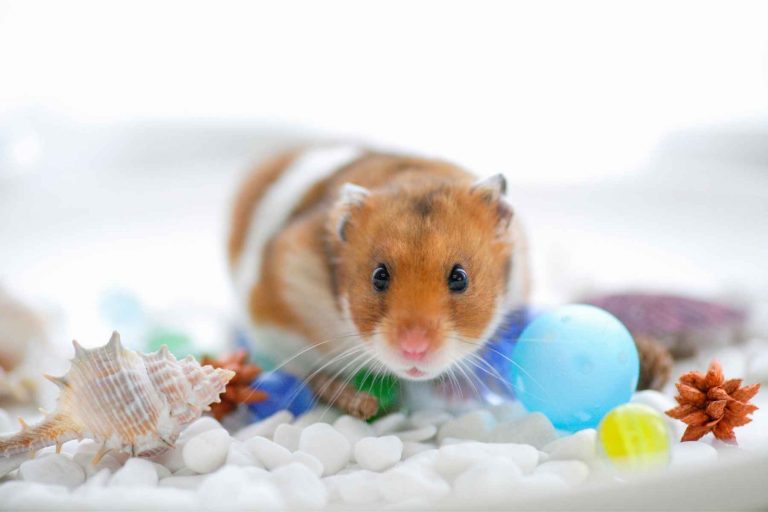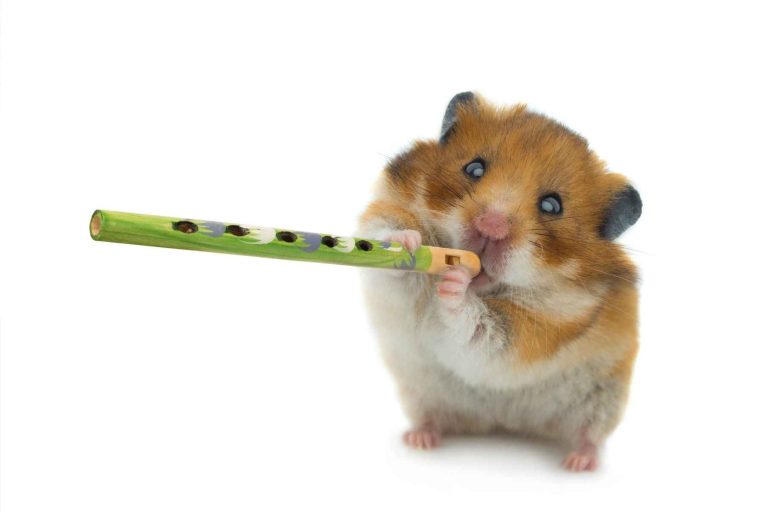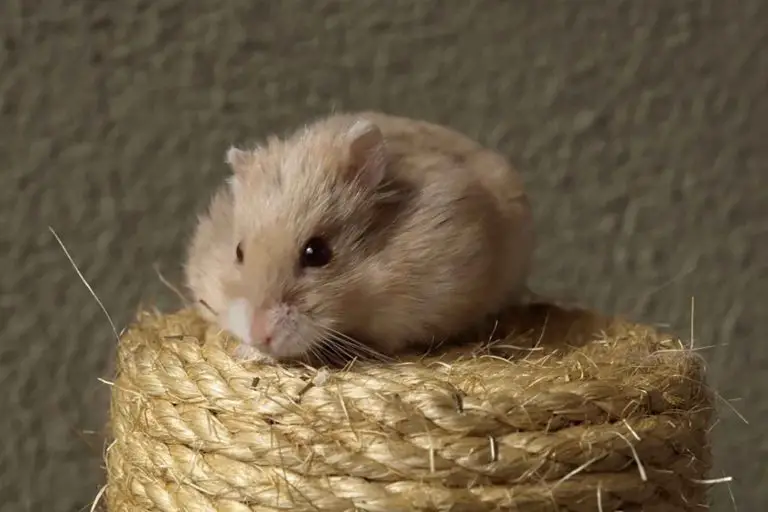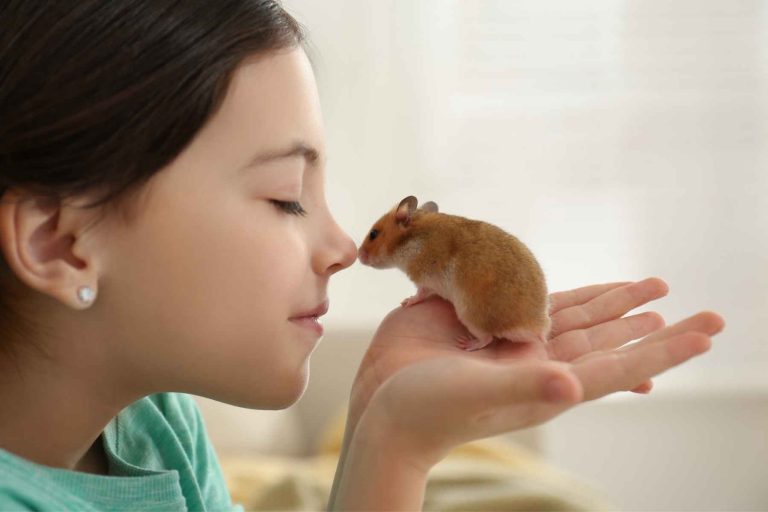Can Hamsters Eat Apples? (What About Skin & Seeds?)

Hamsters are popular pets known for their cute appearance and playful nature. Many hamster owners wonder about the type of foods they can safely offer to their furry friends. One common question that arises is, “Can hamsters eat apples?”
Apples are a nutritious and delicious fruit that can be enjoyed by humans, but can they also be part of a hamster’s diet? In this article, we will explore the answer to this question and discuss if apples are suitable for hamsters, including any potential health benefits and precautions to take when feeding them to your pet.
Benefits and Nutritional Value
When considering fruits for hamsters, apples make a nutritious and beneficial option. Apples contain several essential nutrients, and their provision in moderation can contribute to a well-rounded diet for your pet.
Fiber and Antioxidants
Hamsters can benefit from the dietary fiber found in apples. The fiber aids in digestion and supports a healthy gut. Additionally, apples are a source of antioxidants which help protect cells from damage caused by free radicals.
Vitamin C and Minerals
Apples provide vitamin C, an essential nutrient that supports the immune system and general health. The presence of minerals such as calcium, magnesium, and potassium contribute to maintaining a strong bone structure and proper functioning of the nervous system.
Healthy Treat Option
Providing a variety of treats is important for your hamster’s overall well-being, and apples serve as a low-calorie, nutritious option. Offering small portions of apples as a treat is an excellent way to introduce essential nutrients into your pet’s diet.
Risks and Precautions
While apples can be a healthy treat for hamsters, it is important to understand the risks and take certain precautions when feeding them apples. In this section, we will discuss potential dangers and how to mitigate them.
Danger of Apple Seeds
Apple seeds contain a small amount of amygdalin, which can break down into cyanide when ingested. Cyanide is toxic for hamsters and can be dangerous if they consume a large quantity of apple seeds. To prevent this risk, always remove and discard apple seeds before offering apple pieces to your hamster.
Diabetes and Obesity
Hamsters are prone to developing diabetes, and excessive sugar in their diet can contribute to this risk. Apples are naturally high in sugar, so it’s important to feed apples to your hamster in moderation. Offer small portions of apple as an occasional treat rather than a staple part of their diet. This will help prevent obesity and reduce the risk of diabetes.
Sugar and Acidity
Apples contain natural sugars and acids that can cause digestive upset in hamsters when consumed in large amounts. Overfeeding apples can lead to diarrhea or an upset stomach. To avoid this, limit the portion size and frequency of apple treats for your hamster. Monitor their reaction after consuming apples and adjust the amount if necessary.
Pesticides and Chemicals
Apple skins can sometimes contain traces of pesticides or other chemicals that can be harmful to your hamster. To minimize this risk, thoroughly wash apples before feeding them to your pet. Alternatively, you can peel the apple to remove the skin and any potential chemicals it may have. Organic apples are also an option, as they are grown without the use of synthetic pesticides.
Best Way to Serve Apples to Hamsters
Size and Quantity
When it comes to serving apples to hamsters, moderation is key. Apples should only be given as a small snack or supplement to their regular diet. It is safe to serve a small cube or slice of apple, roughly the size of your hamster’s head, to your pet once or twice a week. Overfeeding apples or any fruit can lead to digestive issues and an imbalanced diet.
Apple Variety
There are several varieties of apples, but they all provide similar nutrition and are safe for hamsters to consume. Choose a fresh, ripe apple without visible mold or damage, and wash it thoroughly to remove any pesticides or dirt. While hamsters can eat the skin of the apple, it is recommended to remove it for easier consumption.
Preparation and Storage
Before serving the apple to your hamster, remove the seeds, as they can be harmful if ingested. Additionally, cut the apple into small, manageable pieces to prevent choking hazards. When storing apples for your hamster, follow these guidelines:
- Keep the apples in a cool, dark place, away from direct sunlight.
- Store them in a breathable container, such as a paper bag, to avoid trapped moisture.
- Check the apples for any signs of spoilage, and discard if necessary.
By following these tips, you can ensure a safe and enjoyable apple snack for your hamster, providing additional nutrition and water content to their diet.
Alternatives and Variety in Hamster Diet
A balanced diet is the key to a healthy and happy hamster. Along with apples, there are numerous other foods that can provide essential nutrients to your hamster. This section covers some safe fruits, vegetables, grains, and protein sources that can be included in your hamster’s diet to ensure optimal health.
Other Safe Fruits
While apples are a hamster-friendly fruit, offering a variety of fruits can help maintain interest in their diet. Some other safe fruits to include in their diet are:
- Bananas
- Berries (strawberries, blueberries, etc.)
- Grapes (seedless)
These fruits can be offered in moderation, as too much fruit can cause digestive upset due to their sugar content.
Vegetables and Grains
Besides fruits, vegetables and grains are essential components of a hamster’s diet. They provide fiber and essential nutrients that can be beneficial for the overall health of your pet. Some examples of suitable vegetables and grains include:
- Peas
- Carrots
- Broccoli
- Leafy greens (spinach, kale, etc.)
- Whole grains (brown rice, quinoa, barley, etc.)
These foods should make up a significant portion of your hamster’s diet, as they are low in sugar and high in essential nutrients.
Protein Sources
Protein is an important component of a balanced hamster diet. Apart from commercial pet food, you can provide additional protein sources to your hamster, such as:
- Nuts (almonds, walnuts, etc.)
- Seeds (sunflower, pumpkin, etc.)
- Lean meats (cooked chicken or turkey)
- Boiled or scrambled eggs (without seasoning)
These protein sources should be offered in moderation to avoid excessive weight gain and ensure your hamster’s diet remains balanced.
Frequently Asked Questions
When it comes to feeding your hamster apples, a number of questions arise. In this section, we will address the most frequently asked questions and clarify any misconceptions about including apples in your hamster’s diet.
Can Hamsters Eat Apple Skin?
Yes, hamsters can eat apple skin, but it is essential to wash the apples thoroughly before offering them to your pet. This is because the apple peel may contain traces of chemicals and pesticides that can harm your hamster’s health. Ensure that the apple is sliced into small, manageable pieces to prevent choking hazards and to make it easier for your hamster to consume.
Can Dwarf Hamsters Eat Apples?
Yes, dwarf hamsters can eat apples just like their larger counterparts. However, the serving sizes should be adjusted accordingly due to their smaller size and weight. A small slice of apple would be an appropriate serving size for a dwarf hamster. As with all hamster species, monitor their consumption to ensure they don’t overeat since too much fruit can lead to digestive issues and weight gain.
When incorporating apples and other fresh fruits like strawberries, blueberries, and watermelons into your hamster’s diet, make sure they are served as treats rather than a staple food. The main food source should consist of a balanced diet, including hamster pellets, whole grains, fresh vegetables, and occasional insect treats. Always provide fresh water for your pet and routinely consult with a vet for optimal health.






